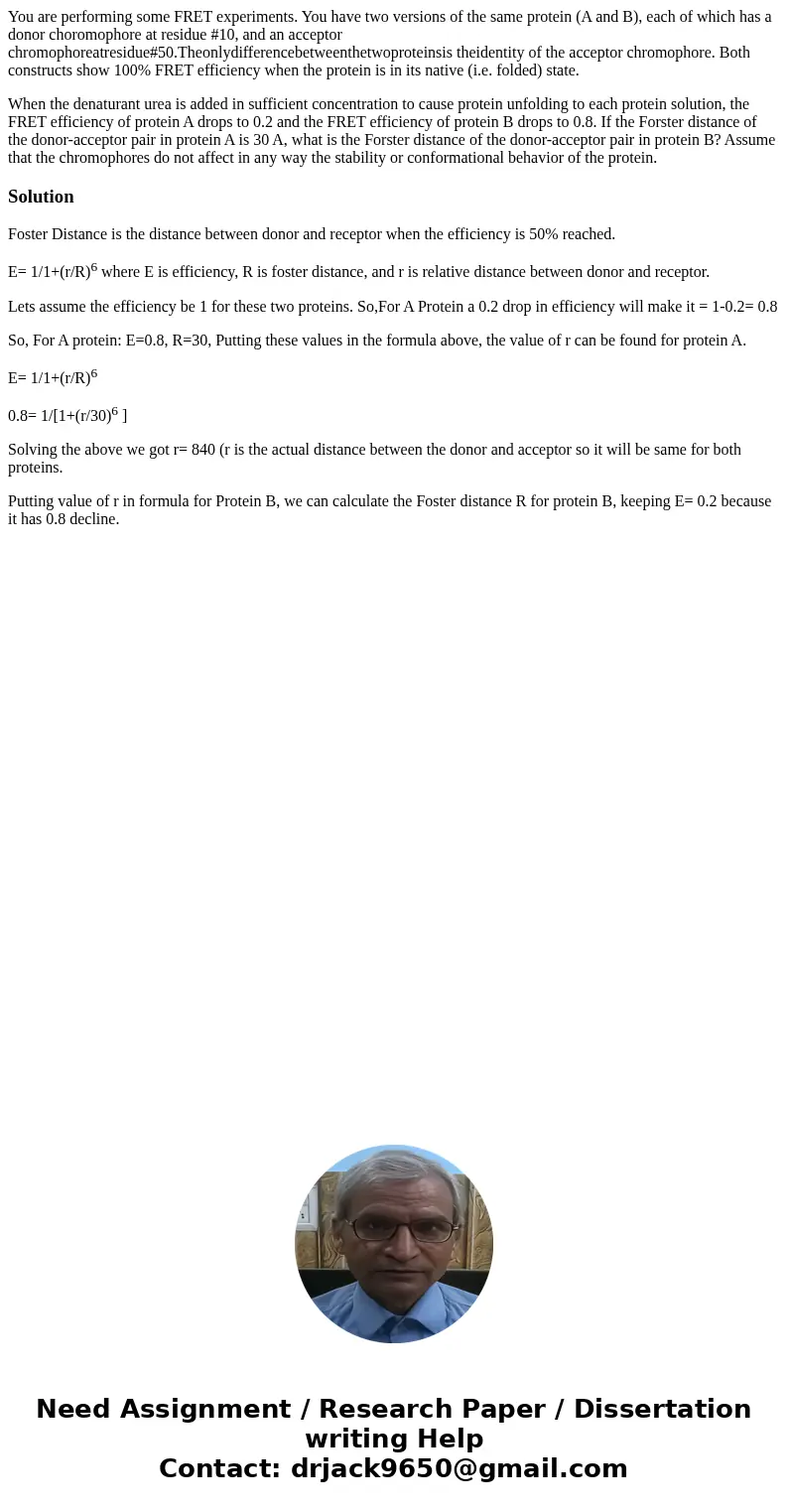You are performing some FRET experiments You have two versio
You are performing some FRET experiments. You have two versions of the same protein (A and B), each of which has a donor choromophore at residue #10, and an acceptor chromophoreatresidue#50.Theonlydifferencebetweenthetwoproteinsis theidentity of the acceptor chromophore. Both constructs show 100% FRET efficiency when the protein is in its native (i.e. folded) state.
When the denaturant urea is added in sufficient concentration to cause protein unfolding to each protein solution, the FRET efficiency of protein A drops to 0.2 and the FRET efficiency of protein B drops to 0.8. If the Forster distance of the donor-acceptor pair in protein A is 30 A, what is the Forster distance of the donor-acceptor pair in protein B? Assume that the chromophores do not affect in any way the stability or conformational behavior of the protein.
Solution
Foster Distance is the distance between donor and receptor when the efficiency is 50% reached.
E= 1/1+(r/R)6 where E is efficiency, R is foster distance, and r is relative distance between donor and receptor.
Lets assume the efficiency be 1 for these two proteins. So,For A Protein a 0.2 drop in efficiency will make it = 1-0.2= 0.8
So, For A protein: E=0.8, R=30, Putting these values in the formula above, the value of r can be found for protein A.
E= 1/1+(r/R)6
0.8= 1/[1+(r/30)6 ]
Solving the above we got r= 840 (r is the actual distance between the donor and acceptor so it will be same for both proteins.
Putting value of r in formula for Protein B, we can calculate the Foster distance R for protein B, keeping E= 0.2 because it has 0.8 decline.

 Homework Sourse
Homework Sourse